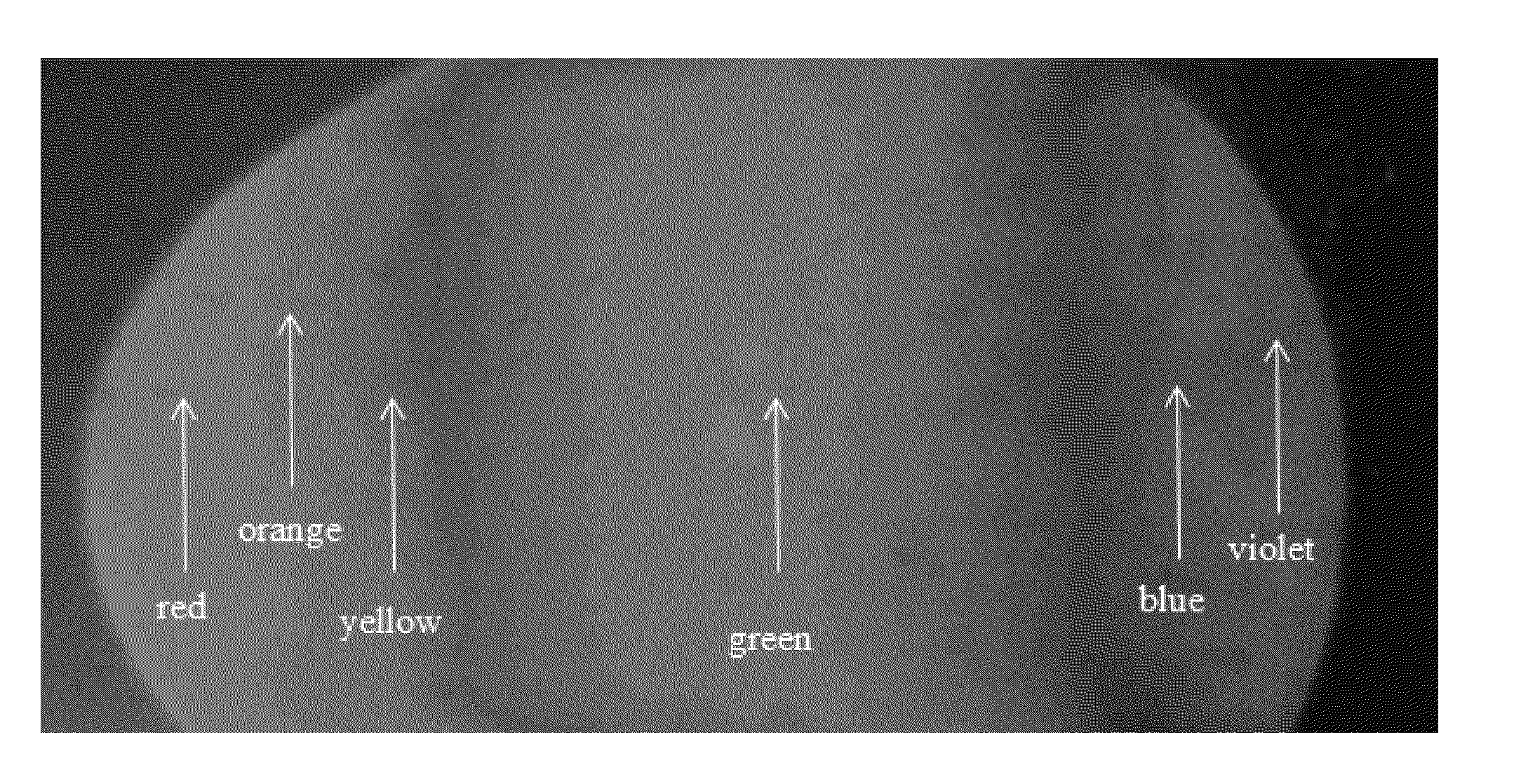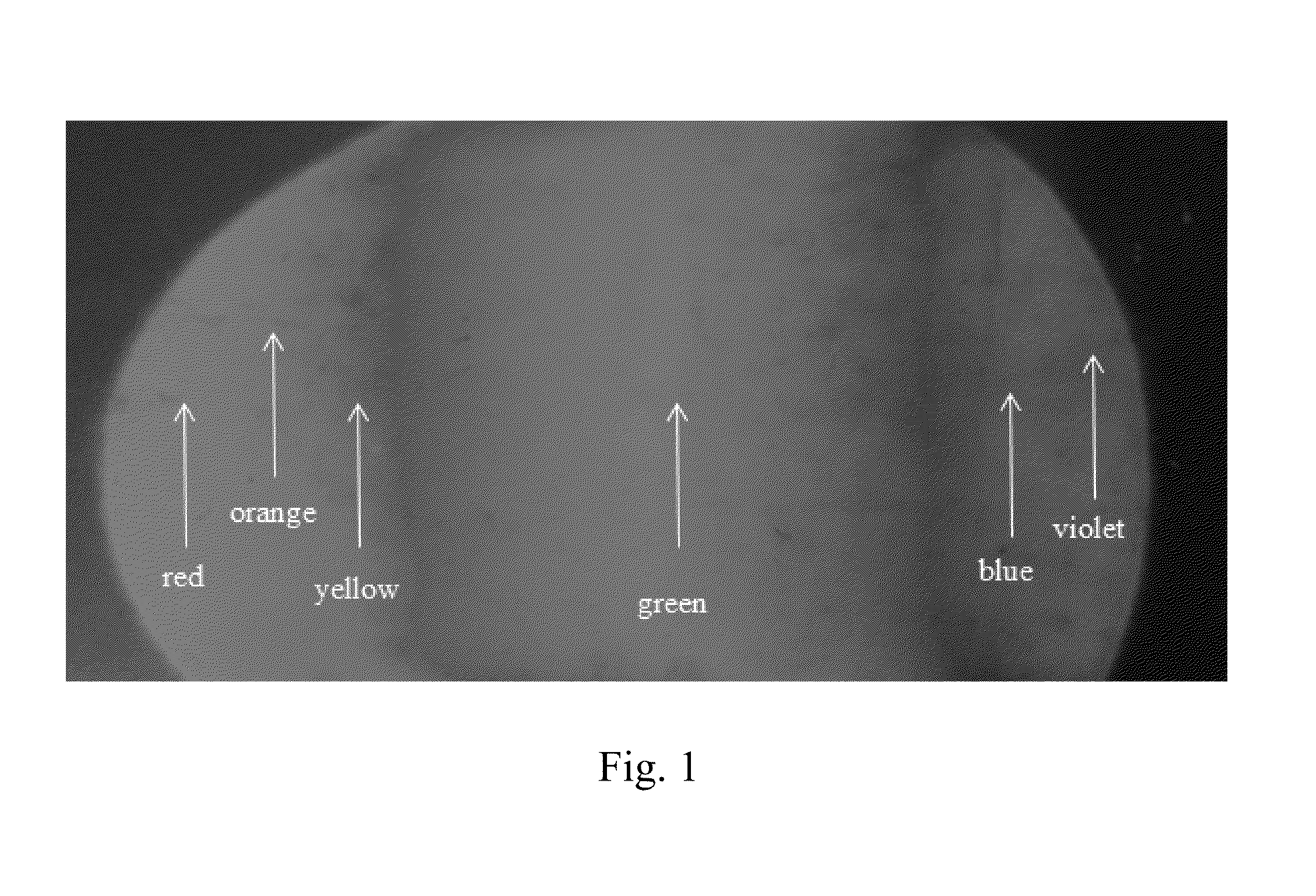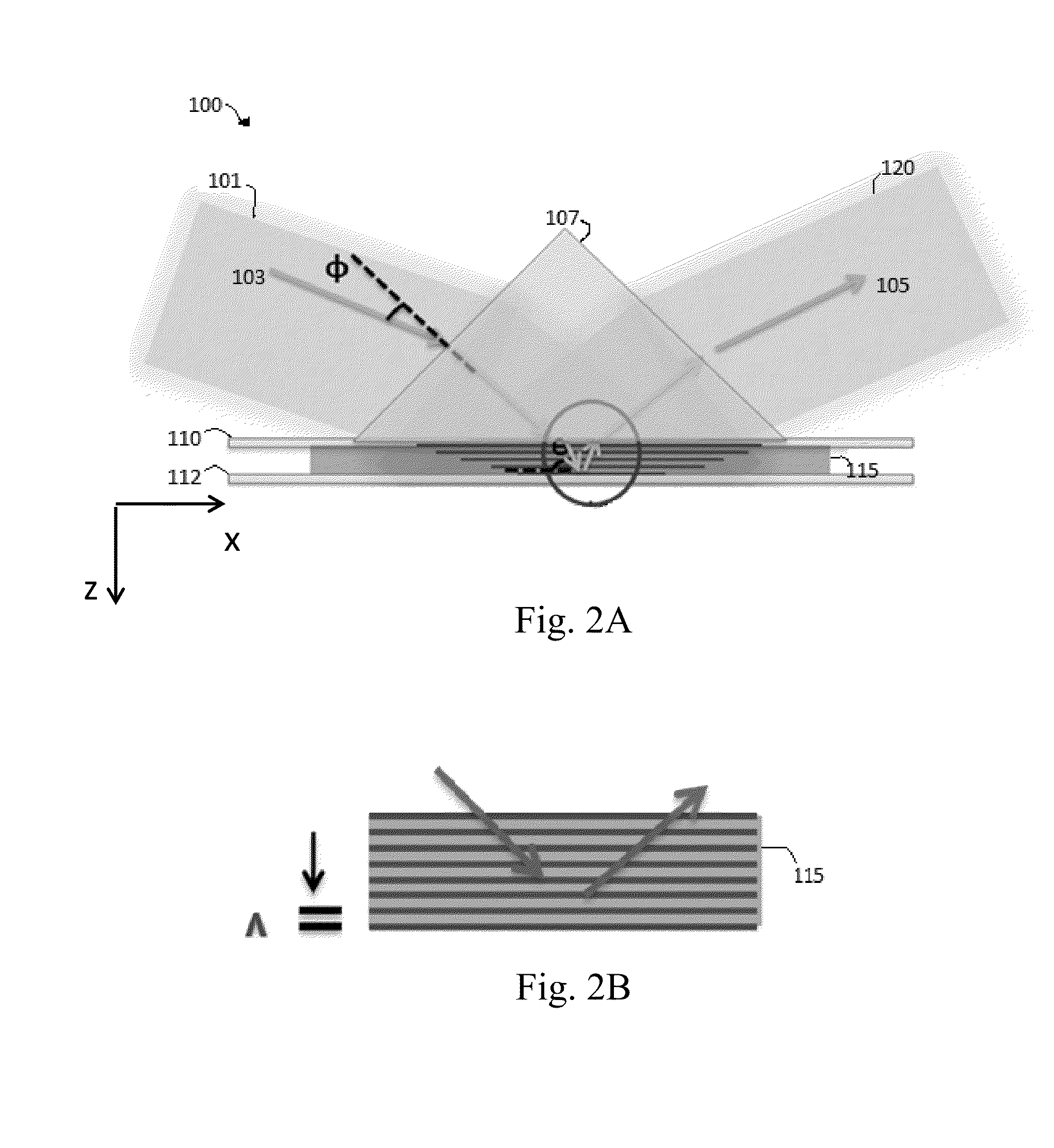Photonic Bandgap Structures for Multispectral Imaging Devices
a multi-spectral imaging and band gap technology, applied in the field of imaging, can solve the problems of high cost of optical filters, inability to meet the needs of high-quality optical filters in the market, and inability to meet the needs of high-quality optical filters, etc., to achieve enhanced phase separation, enhanced phase separation, and high polymerization
- Summary
- Abstract
- Description
- Claims
- Application Information
AI Technical Summary
Benefits of technology
Problems solved by technology
Method used
Image
Examples
Embodiment Construction
[0050]The present invention may be described as a method of making a photonic bandgap structure. FIG. 4 illustrates two such methods. Generally, photonic bandgap structures can be described as optical nanostructures that manipulate the propagation of photons. The photonic bandgap structures herein may contain periodic, regularly repeating internal regions of high and low refractive indices. The areas of high and low refractive indices are created due to polymerization caused by exposure to a spatial interference pattern created by passing a collimated laser beam through a lens or prism. This refractive index modulation changes the transmission / reflection of light in such a way that prevents certain wavelengths of light from propagating through the structure. Photonic bandgap structures are attractive optical materials for controlling and manipulating the flow of light and can be employed in thin film optics ranging from low or high reflection coatings on lenses, mirrors and optical ...
PUM
 Login to View More
Login to View More Abstract
Description
Claims
Application Information
 Login to View More
Login to View More - R&D
- Intellectual Property
- Life Sciences
- Materials
- Tech Scout
- Unparalleled Data Quality
- Higher Quality Content
- 60% Fewer Hallucinations
Browse by: Latest US Patents, China's latest patents, Technical Efficacy Thesaurus, Application Domain, Technology Topic, Popular Technical Reports.
© 2025 PatSnap. All rights reserved.Legal|Privacy policy|Modern Slavery Act Transparency Statement|Sitemap|About US| Contact US: help@patsnap.com



